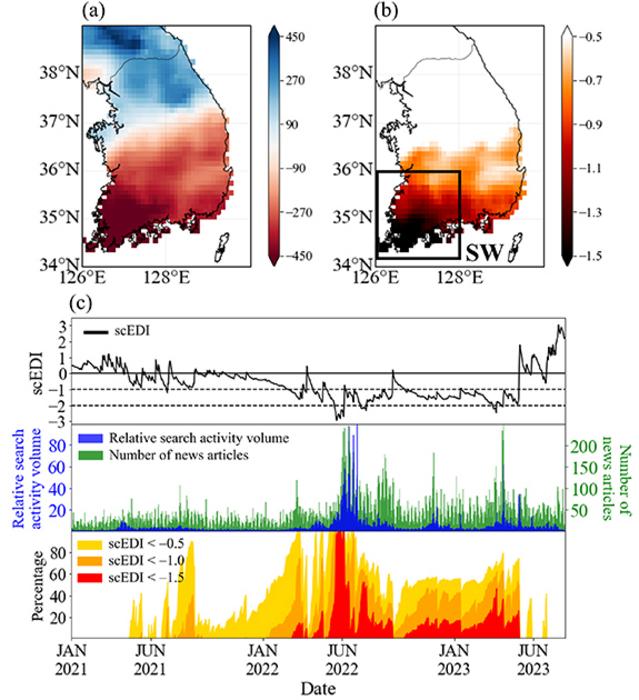According to the Korea Meteorological Administration, the average national rainfall for March in 2023 measured a mere 28.7 mm, which is only half of the usual amount. Although the arrival of the summer rainy season alleviated the drought, the scarcity of water during the critical sowing/crop planting season (late March to early May), when substantial water is required, inflicted severe hardships on farmers. Failure to predict the growing threat of severe springtime droughts stemming from the climate crisis might lead to a recurrence of this year’s situation.

Credit: POSTECH
According to the Korea Meteorological Administration, the average national rainfall for March in 2023 measured a mere 28.7 mm, which is only half of the usual amount. Although the arrival of the summer rainy season alleviated the drought, the scarcity of water during the critical sowing/crop planting season (late March to early May), when substantial water is required, inflicted severe hardships on farmers. Failure to predict the growing threat of severe springtime droughts stemming from the climate crisis might lead to a recurrence of this year’s situation.
A research team led by Professor Jonghun Kam from the Division of Environmental Science and Engineering and Dr. Chang-Kyun Park who previously worked at the Institute of Environmental and Energy Technology at Pohang University of Science and Technology (POSTECH) has employed multi-model projections using the self-calibrating Effective Drought Index (scEDI) to predict drought and recommend the cumulative precipitation necessary for recovery, collaborating with Drs. Sangeun Lee (Korea Research Institute for Human Settlements) and Hyuncheol Yoon (National Disaster Management Research Institute). Their findings have been published in Environmental Research Letters, an international journal in the field of global environment.
In rural regions, dams are typically filled based on precipitation forecasts in anticipation of the crop planting season. However, at the outset of this year, the water storage level at Juam Dam in Suncheon was only 28%. Unlike precipitation forecasting, the prediction system for droughts remains relatively undeveloped, and Korea’s geographical location with four distinct seasons makes it challenging to predict the onset and recovery of a drought.
In the previous year, Professor Jonghun Kam and his team introduced the scEDI, an index designed to detect and characterize a severe drought while taking into account the specific climatological conditions in Korea. This index aids in interpreting precipitation forecasts as drought predictions by adjusting spatiotemporal factors, ultimately enhancing the precision of the traditional EDI.
According to the analysis, the required cumulative rainfall to recover the ongoing drought would be 170 mm, 310 mm, and 440 mm for March, April, and May respectively. This information is crucial for effectively managing the water storage levels in reservoirs in preparation for the upcoming spring drought.
Professor Jonghun Kam who led the research commented, “We now possess a more precise estimation of the required water quantity to mitigate the drought, but further investigation and ongoing monitoring are still necessary.” He emphasized the importance of collaboration between the government and the media by stating, “We need to recognize the significance of regional drought response, including water management initiatives, at the national level such as cross-basin water utilization. There is the need for sustained public awareness about drought.”
The study was conducted with the support from the Mid-career Researcher Program of the National Research Foundation of Korea, the Joint Research and Technology Development Project of the Ministry of the Interior and Safety, and the Sejong Fellowship Program.
Journal
Environmental Research Letters
DOI
10.1088/1748-9326/acfb27
Article Title
ub-seasonal to seasonal outlook of the 2022–23 southwestern Korea meteorological drought
Article Publication Date
3-Oct-2023




